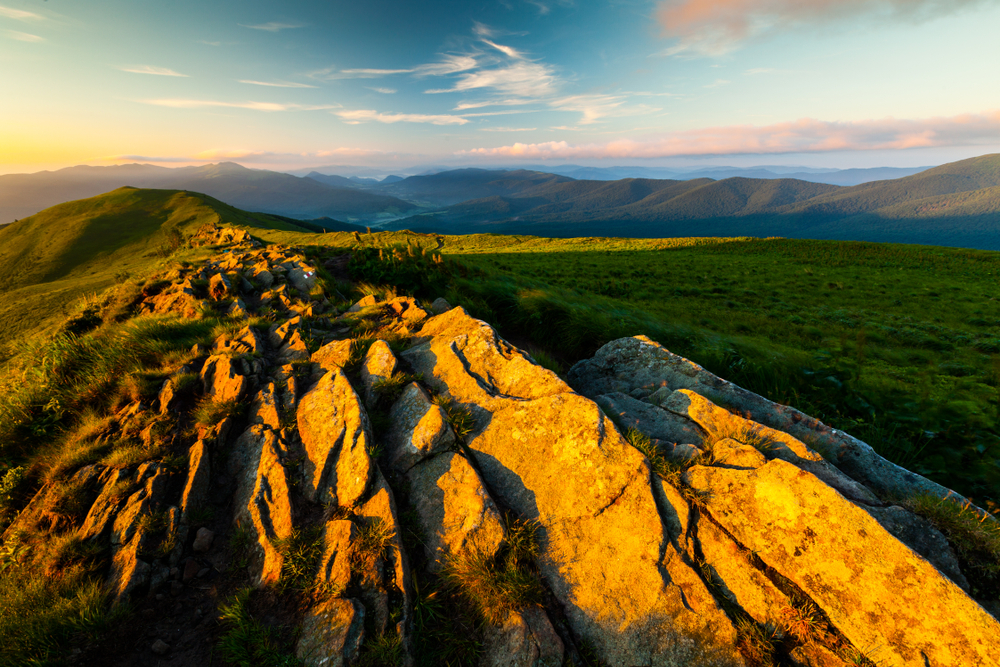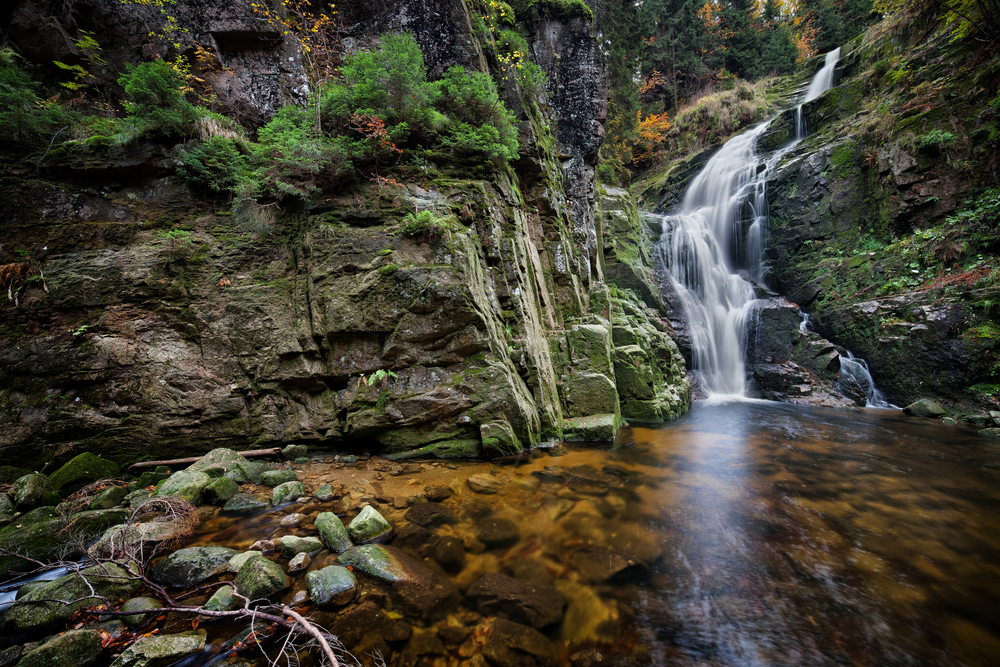Babia Góra Overview
Babia Góra National Park, known locally as Babiogórski Park Narodowy, is located in southern Poland near the border with Slovakia. Encompassing approximately 13.3 square miles (34.04 square kilometers), the park protects the Babia Góra Massif, the highest mountain range in the Polish section of the Western Beskids.
The centerpiece of the park is Babia Góra, also known as Diablak, which stands at 5,659 feet (1,725 meters) and is the highest peak in the Beskids. This rugged and diverse landscape features steep slopes, deep valleys, and rocky ridges, shaped by glacial activity. The terrain varies widely, from lower-altitude forests to alpine meadows, with significant elevation changes that contribute to its rich biodiversity.
The vegetation in Babia Góra National Park follows distinct altitudinal zones. The lower elevations are dominated by dense beech and fir forests, while higher up, spruce trees become more prevalent. As elevation increases, the forests give way to krummholz—stunted, windblown pine and dwarf mountain pine thickets.
Above the tree line, subalpine meadows and rocky outcrops characterize the highest reaches of the massif. The diverse plant life includes many rare and endemic species, such as the Babia Góra sandwort and Alpine bistort, which thrive in the harsh mountainous conditions.
The park’s wildlife is equally impressive, with a variety of mammals, birds, and smaller species making their home in this protected area. Large mammals such as the European brown bear, lynx, and gray wolf roam the forests, while red deer and roe deer are commonly spotted. The park is also home to smaller mammals like foxes, badgers, and martens.
Birdwatchers can find numerous bird species, including the golden eagle, Ural owl, and three-toed woodpecker. The high-altitude meadows attract alpine birds such as the ring ouzel and wallcreeper, adding to the region’s ornithological diversity.
One of the most popular attractions in Babia Góra National Park is the summit of Babia Góra itself. Known for its panoramic views, the peak offers breathtaking vistas of the Tatra Mountains on clear days. The park’s well-maintained network of hiking trails provides various routes to the summit, with the most popular being the red-marked trail from the town of Zawoja.
This trail, part of Poland’s longest long-distance hiking route, the Main Beskid Trail, is a favorite among hikers seeking a challenging yet rewarding ascent. Other trails lead to scenic viewpoints such as Sokolicy and Kępa, which offer striking views of the massif and surrounding valleys. In winter, the park attracts visitors for ski touring and snowshoeing, taking advantage of the snowy slopes and open alpine terrain.
Conservation efforts in Babia Góra National Park focus on protecting its fragile ecosystems from the pressures of tourism and climate change. The park was designated a UNESCO Biosphere Reserve in 1977, highlighting its ecological significance. Strict regulations limit human impact, with designated trails and visitor guidelines ensuring that the unique flora and fauna remain undisturbed.
Challenges include balancing conservation with tourism demand, particularly as the park’s popularity grows. However, successful reforestation programs and habitat restoration efforts have strengthened the resilience of the park’s ecosystems, ensuring that Babia Góra remains a haven for wildlife and a treasured destination for nature lovers.












































































